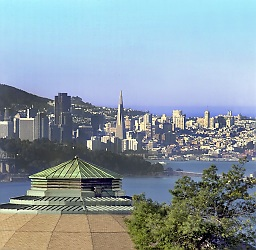Speaker
Mr
Alessandro Marchioro
(CERN)
Description
CMS is currently studying solutions to build a new tracker capable of providing prompt information on high transverse momentum to the central level one trigger. This information is essential for the reduction of trigger rates at the projected SLHC beam luminosity.
The architecture described here aims at detecting high transverse momentum particles directly in the front-end modules. It assumes a system built with a few layers with this pattern recognition capability covering an area of between 10 to 20 m2. It is based on double-sided modules of 5x5 cm2 with sensing elements of about 100 by 2000 microns. Some 36 front-end chips of 16 by 8 mm2 would be mounted on two sides of the module with a floorplan resembling pixel front-end read-outs but with a considerably higher functionality built-into their logic.
The data adjustment and pattern recognition logic to be implemented in the front-end chips are being designed and presently described in Verilog. Entire front-end modules are also modeled using this language. The logic necessary to reduce large hit clusters, align the tracks in the Z-direction as to provide momentum matching in the phi direction and for momentum discrimination will be described.
A software environment capable of reading physics Monte-Carlo events, of simulating for these input conditions the behavior of the proposed matching algorithm described at the hardware gate level and to compare them with standard data analysis software will also be described.
A realistic power consumption estimate based on the number of active logic gates, the chosen VLSI technology and of the logic switching generated at the design luminosity will also be given.
Primary author
Mr
Alessandro Marchioro
(CERN)




